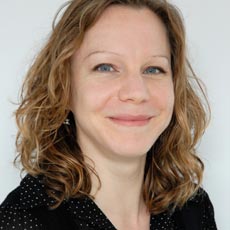Chris Game
Any teaching academic will recognise it – the feeling of relief when your lecture-ending “Any questions?” produces one that could have been quite tricky, but which luck has decreed you’ve had a chance to consider. My most recent example came following a lecture on devolution to international students – from, interestingly, a young Japanese woman. What did I think of the City Mayors Foundation (CMF), the internet-based urban affairs think tank, restricting its biennial World Mayor Prize in 2018 to women mayors only? International Women’s Day seemed an appropriate moment to reflect on my answer.
I should explain that the CMF is nowadays but one of a plethora of what I label BMT organisations. Not Business Management Training, although that may sometimes be a sub-plot, but simply Bringing-Mayors-Together. Over the past two decades, as ever more countries in both Western and post-Communist Central and Eastern Europe turned to a model of governance once associated mainly with the US, Latin America, France and Southern Europe, these BMT organisations have similarly mushroomed.
There are now mayoral world conferences, covenants, summits, forums and most notably (in my view, anyway) the Global Parliament of Mayors, founded by the distinguished and sadly missed Dr Benjamin Barber, author of If Mayors Ruled the World, and due to meet, if Bristol’s Mayor Marvin Rees can pin down the funding, in his city this October.
I should also mention probably the newest BMT event – “the first ever international metro mayors summit” held last December at London’s tallest building, The Shard, and part-organised by the independent think tank, Centre for Cities. Its timing suggested that, international aspirations notwithstanding, it was custom-designed for our new Combined Authority mayors – elected only last May, and so possibly uncertain which, if any, of the other get-togethers they qualified for. And its advance publicity reinforced that impression – featuring a block set of their six headshots.

I’ve no idea if this latter helped boost attendance, but I do know, because I regularly use a near-identical powerpoint slide, the immediate impression it inevitably conveys: that, if you don’t happen to be a white, 50s-ish, jacket-and-tie-wearing male, then maybe these new, exciting-sounding governmental roles aren’t for you.
Which is unfortunate, and obviously not their fault. Virtually no one predicted the six elections would split 4-2 to the Conservatives. If they hadn’t, one of the six, or nearly 17%, would almost certainly have been female, which isn’t that shy of the 23.5% for our existing mayors – four out of a grand total of 17.
For us, clearly, mayoral government, launched nearly 20 years ago in the still sunlit days of New Labour, has been the slowest of burners, and, as we turn to the international stage, it’s worth adding some statistical context. Such is the humungous scale of what we still for tradition’s sake call our ‘local’ government that, had the new Government done what some mayorists proposed and required, rather than invited, all English districts/municipalities with populations over, say, 50,000 to switch from their longstanding committee systems to elected mayoral government, we’d still have only about 320 mayors – compared to France’s 36,000, Germany’s 11,000, Italy’s 8,000, Hungary’s 3,000, and so on. True, many of these are indirectly elected or even appointed, but all will be prominent figures and have significant powers in their respective communities, and all presumably are available for Mayoral Get-Togethers – should that happen to be their socialisation mode of choice.
Which leads easily, in my mind anyway, back to the question of what fraction of these thousands are women, and back therefore to the City Mayors Foundation. It’s not primarily a research body and doesn’t do precise number counts, but its estimate is that only 20% of the world’s mayors are women. And its detailed data about individual countries’ local governments enable at least some examination of the proposition that, even where significant numbers of women are elected as mayors, it’s only rarely in their countries’ biggest cities. It is a rough examination – Birmingham, for a start, being confused with the West Midlands – but overall the CMF’s most recent figures are hard to argue with: one woman mayor in the world’s 50 largest cities, five in the 100 largest, and 26 (8.7%) in the 300 largest, which equates to populations of over 500,000.

My table, based on some of the CMF’s studies of the largest cities in individual countries – most, obviously, way under 500,000 – amplifies these figures in the right-hand columns, but also highlights some of the exceptions. And not least, as my Japanese questioner was well aware, the remarkable achievement of Yuriko Koike’s 2016 election as Governor (the equivalent of Mayor) of Tokyo, recorded at the time in these columns.
So what I was being asked was: if, even in a country with Japan’s still conservative gender role attitudes, a woman can be elected to the top local government post, isn’t a World Mayor Prize open to only a fifth of the world’s mayors, both unnecessary and somewhat patronising? I admit that, when I first read about it, I myself was rather surprised. I also recalled a Scottish National Gallery exhibition of Modern Scottish Women Painters and Sculptors a couple of years ago that I’d rather enjoyed, but that attracted rather more than just artistically critical attention. I needed the security of some more directly relevant data.
If these things worked perfectly, the CMF’s estimate of 20% women mayors would mean than the eight rounds of World Mayor Prizes to date – each awarding a main prize and two runners-up Commendations – would have produced two women prize winners and perhaps three commendations. Rather remarkably, they have. The 2005 Award went to Athens Mayor, Dora Bakoyannis – helped by the successful staging of the 2004 Olympics, but also for her fight against the terrorist organisations that in 1989 had assassinated her parliamentarian husband. Winner in 2008 was Helen Zille, Cape Town Mayor, leader of South Africa’s opposition Democratic Alliance, and within a year Premier of Western Cape Province.
That’s the good news, though. The less good is that those two winners plus one runner-up came in the first four rounds, with women taking just two commendations in the four rounds since 2008. If the organisers were getting concerned, they had two options. Fiddle the next contest: possible, in a year-long election conducted entirely through a CMF dedicated website, with readers doing all the nominating and voting, but the organisers all the short-listing and counting. Or, how much nicer, fix the outcome.
This wasn’t quite how I responded to my Japanese questioner. I did, though, indicate that, for essentially the same reasons as I have long supported electoral gender quotas to increase women’s representation in national parliaments, the idea at this time of restricting for one year a World Mayor Prize to women mayors seemed acceptable: regrettable that it was felt necessary, but acceptable.
My only personal condition would be that the CMF urgently consider at least side-lining, this time round, the Prize awarded to the winner – about the most masculin sculpture imaginable: an unambiguously male figure being inspired or overwhelmed by three massive cubes, squares of squares, clearly referencing the male symbol in any genogram or family tree. It makes me wince.

 Chris Game is a Visiting Lecturer at INLOGOV interested in the politics of local government; local elections, electoral reform and other electoral behaviour; party politics; political leadership and management; member-officer relations; central-local relations; use of consumer and opinion research in local government; the modernisation agenda and the implementation of executive local government.
Chris Game is a Visiting Lecturer at INLOGOV interested in the politics of local government; local elections, electoral reform and other electoral behaviour; party politics; political leadership and management; member-officer relations; central-local relations; use of consumer and opinion research in local government; the modernisation agenda and the implementation of executive local government.
 Catherine Mangan is Director of INLOGOV, co-convenes the Win Win network at the University of Birmingham, and facilitates national leadership programmes including
Catherine Mangan is Director of INLOGOV, co-convenes the Win Win network at the University of Birmingham, and facilitates national leadership programmes including 

